
News • Over the next decade
Robotics set to transform spinal surgery for millions
Robotics, AI, and machine learning can make spinal surgery more accurate, efficient, and safer, thereby reducing costs, patient recovery time, and radiation exposure.

Robotics, AI, and machine learning can make spinal surgery more accurate, efficient, and safer, thereby reducing costs, patient recovery time, and radiation exposure.

What’s in a name? In the case of Asensus Surgical, Inc., previously known as TransEnterix, Inc., the recent rebranding doubles as a mission statement for the manufacturer of surgical robotics systems: The initial ‘A’ stands for artificial intelligence and augmented surgery, reflecting the company’s emphasis on new technologies designed to enhance the operator’s cognition (‘sensus’…
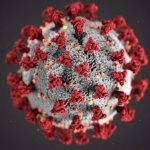
Thermo Fisher Scientific and Artificial have announced a strategic technology collaboration to develop an integrated and comprehensive software automation platform for Thermo Fisher’s standardized COVID-19 Testing Platform. The integration will result in increased testing throughput and support global healthcare initiatives.

‘Hello Tessa. Do you know what I’m doing today?’ a fragile, elderly woman asks tentatively. The small robot she’s addressing has a decorative plant on its head and is wearing a jacket. This is not a funny fantasy. Tessa has proved ‘her’ usefulness and acceptability. The little robot results from a year-long pilot project recently completed in the Netherlands by the Groene Kruis…
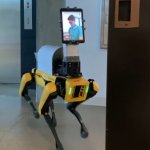
In the era of social distancing, using robots for some health care interactions is a promising way to reduce in-person contact between health care workers and sick patients. However, a key question that needs to be answered is how patients will react to a robot entering the exam room. Researchers from MIT and Brigham and Women’s Hospital recently set out to answer that question. In a study…
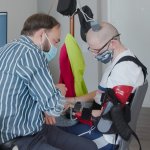
Someone has a stroke every 40 seconds in the US, resulting in death every 4 minutes. Stroke is the leading cause of disability from a medical condition. When it happens, blood clots or bleeds kill a part of the brain – it goes dark – and can no longer control part of the body. People stop being able to walk, see, talk, or control their hand or arm the way they once did. Although treatments…

The deployment of conversational user interfaces (CUI) or chatbots to healthcare has started gaining momentum. It is fueled by the rising power of artificial intelligence (AI), the increasing popularity of mobile health applications as well as the desire for engagement and usability. The past few years have seen a myriad of innovations in chatbots that can automate and engage in human-like…

In April 2017, St. Marien Hospital in Siegen, Germany, made robotic history: it was the first hospital in Germany to introduce the Transenterix surgical robotic system. Since then, more than 450 surgeries were performed with the Senhance® surgical robotic system and the expertise of Professor Dr Dietmar Stephan, Head of Minimally Invasive Surgery, is in high demand – worldwide.

Health industry digitalization is one of the highest priorities in the healthcare sector these times. In perspective, it improves current living standards with quicker and easier access to help. The Healthcare Automation and Digitalization Congress business program will cover digital trends in the healthcare industry. The Congress will take place in Zurich, Switzerland on the 22nd - 23rd of…
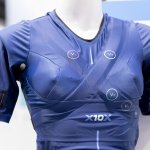
MEDICA in Düsseldorf is a world-leading platform for the medical technology business and the healthcare industry and has always been one of the places to be for the entire sector as it covers current digital health trends, innovative products and services for linking all of the major stakeholders in medical care. Consequently, digital health is a mainstay of virtual.MEDICA, which, due to the…
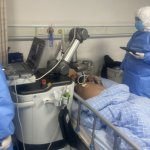
Ultrasound specialists at the Hainan Hospital of Chinese People’s Liberation Army General Hospital in Sanya and the Zhejiang Provincial People’s Hospital of Hangzhou successfully conducted robotic tele-ultrasound examinations over a 5G network of four patients with confirmed and suspected Covid-19. They were in Tongxiang and Wuhan, cities some 2600+ kilometres distant.

While the debate on the added value of robotics and robot-assisted systems has been in full swing for a while now, the demand for robotic surgery throughout Europe’s medical institutions continues to grow exponentially, particularly in specialties like visceral surgery and orthopaedics. But what exactly are the benefits and downsides involved with the use of surgical robots?

In August 2019, the Evangelische Krankenhaus Wesel (EVK) was the first hospital in the Lower Rhine region in Germany to invest in a robotic system for abdominal surgery. In the beginning, the Senhance® Surgical Robotic System, developed by TransEnterix, was used for minimally invasive interventions in general surgery but today its field of application has widened considerably. The EVK team is…

TransEnterix, Inc., a medical device company that is digitizing the interface between the surgeon and the patient to improve minimally invasive surgery, announced that Hackensack Meridian Health Pascack Valley Medical Center, a hospital in New Jersey, successfully completed its first surgical procedures using the Intelligent Surgical Unit (ISU).
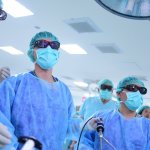
The healthcare system of Taiwan, renowned for its ability to tackle challenges, has held up very well during the COVID-19 pandemic. To underline the nation’s role as a healthcare innovator, the Taiwan External Trade Development Council (TAITRA) presented several of the most promising companies and their products in an exclusive webinar. The event showcased cutting-edge technologies as well as…

Imagine a dressing that releases antibiotics on demand and absorbs excessive wound exudate at the same time. Researchers at Eindhoven University of Technology (TU/e) hope to achieve just that, by developing a smart coating that actively releases and absorbs multiple fluids, triggered by a radio signal. This material is not only beneficial for the healthcare industry, it is also very promising in…
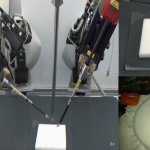
In a collaboration between Google Brain, Intel Corporation and the University of California, Berkeley, researchers have 'trained' robots to mimic surgical procedures through the use of instructional videos.

A Danish pipetting robot is automating Covid testing processes in hospitals around Europe. The robot, called flowbot ONE, significantly reduces the time it takes for laboratories to produce results for patients to tell them whether they are infected with Covid-19.
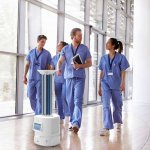
In the hustle and bustle of a hospital, properly disinfecting all surfaces in a patient room can be a challenging and time-consuming task. Now, in times of the coronavirus pandemic, it can also be life-threatening. To minimize the risk for their staff, hospitals are utilizing disinfection robots to sanitize surfaces and rooms.

A team of scientists from the Max Planck Institute for Intelligent Systems (MPI-IS) in Stuttgart invented a tiny microrobot that resembles a white blood cell travelling through the circulatory system. It has the shape, the size and the moving capabilities of leukocytes and could perhaps be well on its way – in a rolling motion of course – to revolutionize the minimally invasive treatment of…

Researchers at the Hong Kong University of Science and Technology (HKUST), the University of California, Berkeley and Lawrence Berkeley National Laboratory are developing an artificial eye with capabilities close to its human model. The research team published their work on the biomimetic eye in the journal Nature. “Watching sci-fi series such as Star Trek and I, Robot, I thought about making a…
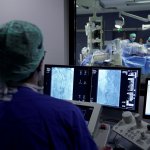
Siemens Healthineers AG took a big step last October. To incorporate treatment along an entire clinical path, the firm acquired Corindus Vascular Robotics, Inc., to combine image-guided diagnosis with robot-assisted surgery. A couple of months later, the Corindus endovascular robotic system CorPath GRX was used to implant a vascular stent into an obstructed coronary artery – the first use of…
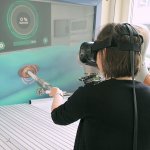
More than 200,000 patients undergo hip replacement surgery in Germany each year. To avoid complications and extend the lifespan of the artificial joint, the implants must be fitted precisely in the acetabulum (hip socket). The procedure, particularly milling the acetabulum, is not only difficult but also the technique is difficult to teach and train.

The hospitals are deploying "ninja robots" to measure fevers and protect the health of overburdened medical workers on the frontlines of the coronavirus outbreak.
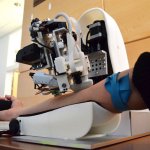
Engineers at Rutgers University have created a tabletop device that combines a robot, artificial intelligence and near-infrared and ultrasound imaging to draw blood or insert catheters to deliver fluids and drugs. Their most recent research results, published in the journal Nature Machine Intelligence, suggest that autonomous systems like the image-guided robotic device could outperform people on…